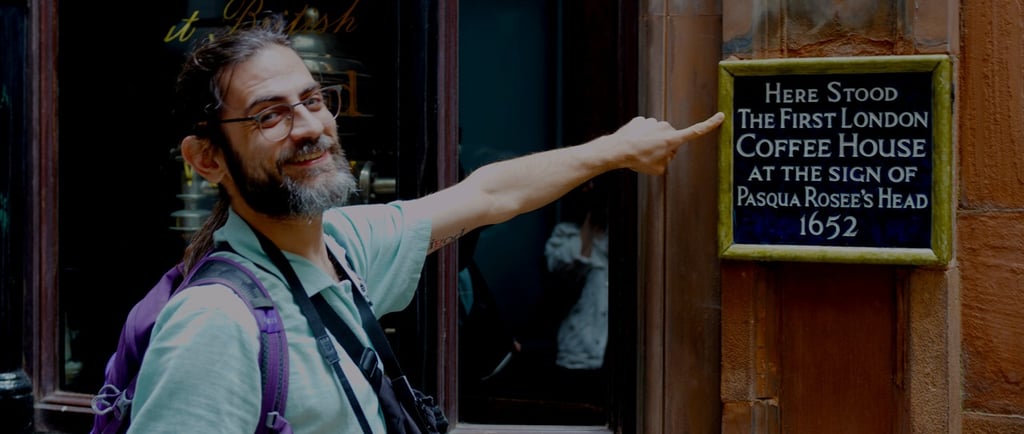How a Hunt for Turkish Coffee Uncovered the Story of London’s First Coffee House
While searching for a connection between Ottoman Turkey’s export of coffee to Europe, a London guide provided me with an interesting story about the first coffee house in London.
TRAVELSTORYTELLINGJOURNALISM
Ali Halit Diker
10/22/20252 min read


I love it when I find a much more interesting angle than I initially thought while researching a subject. There is a good chance that an unexpected angle would turn a good article into a compelling narrative.
When I was working on my article about Turkish coffee for CNN, I had a plan—a rough outline of how I would structure the article. One of the most critical connections was the Turks’ introduction of coffee to Europeans. The connection was vague.
However, I found a clear one, thanks to Chris MacNeil. It was not the first time a European nation encountered coffee culture, but it was a first — unexpected and intriguing — with a connection to Turkey, nonetheless.
Chris MacNeil, a Certified City of London Green Badge Tour Guide, shared the story of the first coffee shop in London with me. The assistant of a Levant Company merchant, who lived in Smyrna (modern-day İzmir), was the protagonist.
This story was a great source in showing, not only telling, how coffee connects people in a similar way, regardless of geography.
The Story That Connected Two Empires
Chris painted a vivid picture of mid-17th-century London. The city was recovering from a brutal civil war, and alcohol, the social lubricant of the time, faced restrictions. People needed a new kind of stimulant.
Enter Pasqua Rosée, a man from Smyrna and the servant of a Levant Company merchant named Daniel Edwards. Rosée was accustomed to preparing coffee for Edwards’s business associates.
In 1652, Rosée opened a “coffee shack” in Saint Michael’s Alley (and of course, I went to see it. See the picture). What happened next was a near-perfect mirror of the ‘kahvehane’ culture that had flourished in Istanbul for a century.
In London, for one penny, men could enter, drink unlimited coffee, and debate news, politics, and business. This “Penny University” became a hotbed of ideas, eventually spawning institutions like Lloyd’s of London.
The parallels to Turkey were astonishing.
Intellectual Hubs: In Turkey, coffee houses were also intellectual centres where news was read aloud to the illiterate.
A Political Threat: In London, King Charles II tried to ban coffee houses, fearing “anti-royalist sedition and treasonous conversation.” In the Ottoman Empire, Sultans repeatedly closed them, fearing the exact same plots against the throne.
A Man’s World: In both cultures, women were largely barred from these new public spaces.
The Detail Is the Story
Storytelling is so much more than just relaying facts or simply putting events in order. An itinerary or a simple guide would have missed this connection completely.
Finding these hidden threads and adding them to my work in a way that uncovers the human element — the shared desire for community, the fear of new ideas, the thrill of innovation — makes a story resonate with the audience.
